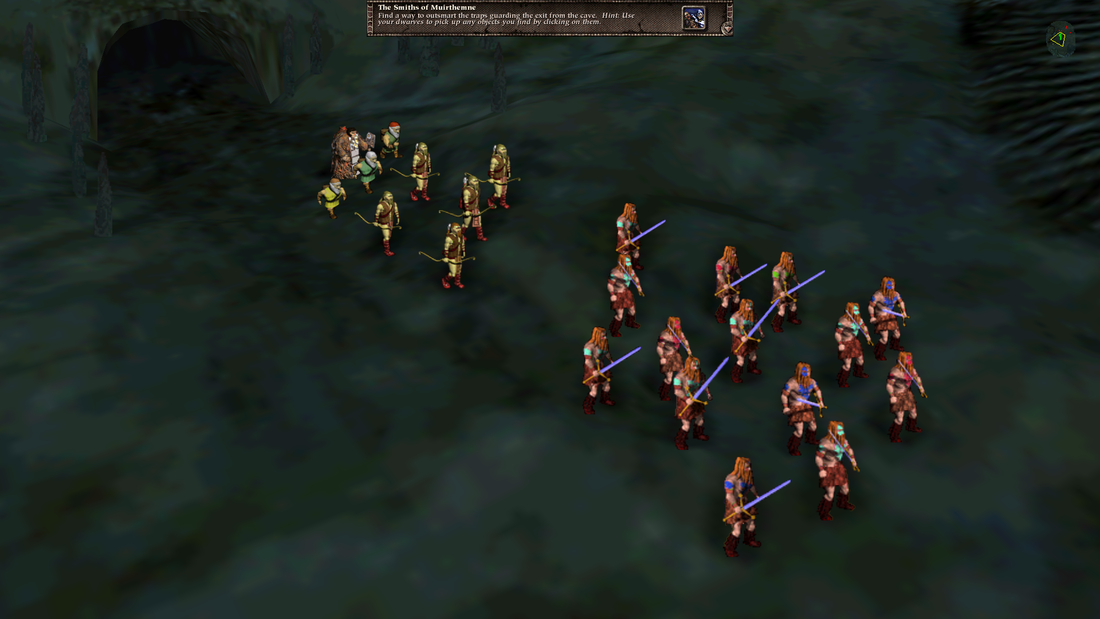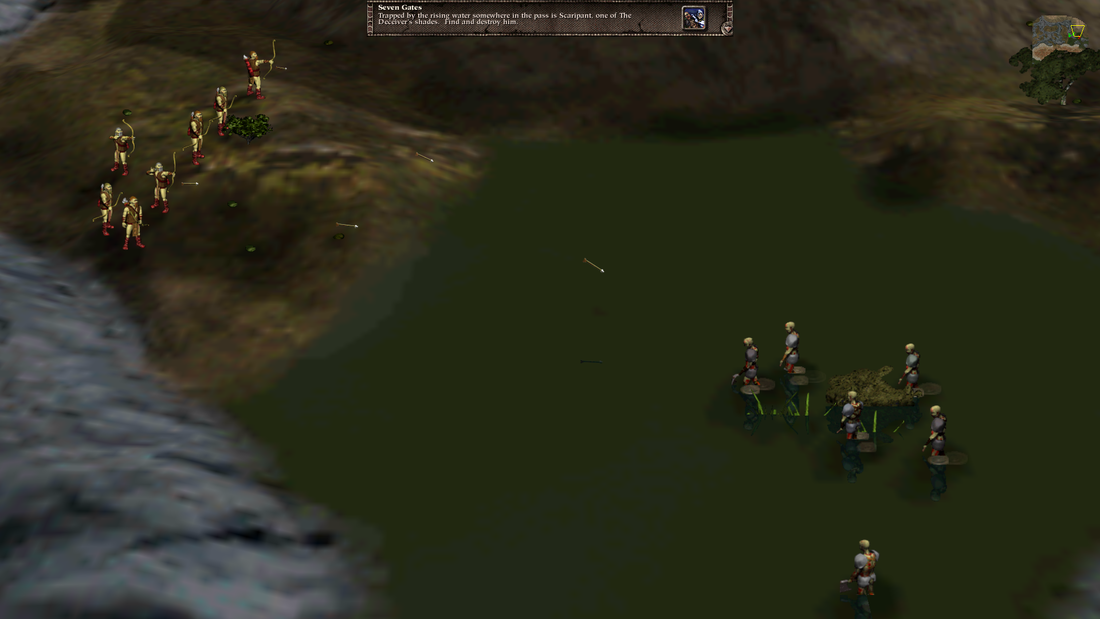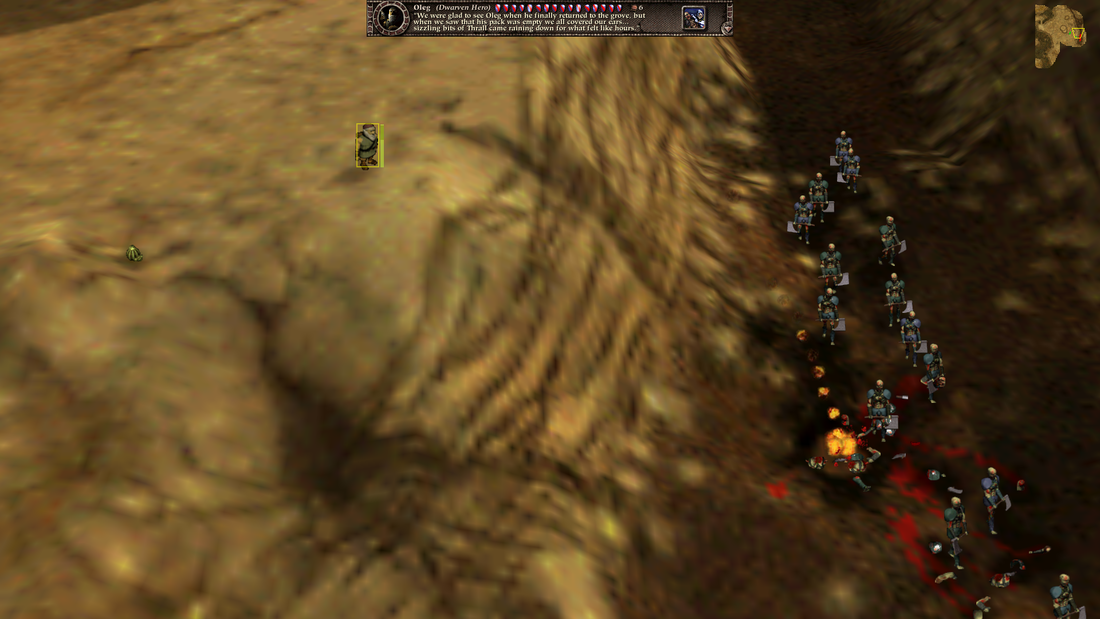|
Today, developers Bungie are known for the blockbuster Halo series and more recently, for the Destiny games. And while the studio changed first-person shooters forever, first on the Mac and then on consoles, none of their later successes would have been possible without their earlier work in a different genre altogether. It was the success of pioneering real-time tactics game Myth: The Fallen Lords which, in part, prompted Microsoft to purchase Bungie and to help propel Halo to industry-shaking success in 2001.
Myth was ahead of its time. Its 3D environments were some of the first in the genre and Bungie’s work helped to forge a new style of gameplay. They cut away the base building, resource management, and large unit counts that defined Command & Conquer (1995) and Total Annihilation (1997). Myth isn’t a strategy title at all - but part of the first wave of real-time tactics games. It does more than make players think; it makes them feel. Thanks a unique union of writing and gameplay, each of Myth’s missions inspires feelings of desperation, terror, relief and - hopefully - triumph. 25 years later, it’s the emotional impact of Myth which makes it special to this day.
Myth is set in a medieval fantasy world which at first glance, might seem tiresomely familiar. War has raged for 17 years between the upstanding forces of Light, and the shambling undead armies of the Dark. But very quickly, Bungie transcends this Tolkienesque setup. Much of this is to do with the unforgettable pre-mission briefings. They comprise the entries in a war journal written by an anonymous soldier of “The Legion”, the elite vanguard of the army of the Light. Voiced by Geoffrey Charlton-Perrin, the soldier is a sombre figure who sees his world falling apart as he narrowly survives one gruesome battle after another.
It’s hard to overstate how richly evocative the briefings are. Bungie’s writers expertly deployed indirect exposition, mentioning key figures, locations, and historical events naturalistically in passing, rather than resorting to the usual clunky info-dumps. When the soldier refers to figures like Alric, Shiver, and the Deceiver, or locations like Bagrada, the Cloudspine, or the city of Covenant, they take on real mythic proportions. The world-building is all the more powerful because it draws on our imagination.
The briefings make clear that even at the outset of the story, the civilised world teeters on the brink of destruction. The seemingly impossible odds are reflected in the gameplay. The Legion is constantly outnumbered, and so Myth gives players control over only small numbers of units. Troops are precious and reinforcements are vanishingly rare; individual units even have personal names to hammer home the fact that they are unique and irreplaceable. Lose another warrior, and lose the bridge; lose the bridge, and civilization itself could fall. Like the later Populous: The Beginning (1998), Myth provides players with only a handful of distinct unit types. This makes it simpler to learn their relative strengths and weaknesses, and aids in micromanagement of engagements. Warriors and bare-chested berserks are straightforward, but fragile archers must be positioned with care and the journeyman’s healing ability used sparingly. Any Myth veteran will remember the notorious dwarves, whose thrown explosives and satchel charges can be as devastating to their own allies as they are to formations of rotting thralls.
The narrator speaks of sorcery and magic artefacts with a hushed reverence, and admits that few people in Myth’s world understand these forces. He refers to the exploits of heroes from ages past, like the indomitable Connacht who defeated a previous rising of the Dark. Within the missions themselves, stronger foes inspire a real awe and terror. Enemy armies sometimes include fetches, fragile entities that wear stolen human skin and wield lightning that blows hardened soldiers apart in the blink of an eye. Trows are mountains of flesh which decapitate men with a whip-like kick. Finding a way to crush these menaces, especially while taking minimal casualties, is where Myth really sings and where its fiction and gameplay come together perfectly. There is really no victory like a victory in Myth.
There are some barriers to entry for Bungie’s tactical classic. The muddy graphics of the 3D environments, the slightly confusing objectives, and awkward control scheme all take some getting used to but this is to be expected of a game with such a long history. In some missions it can feel like the route to success is too prescriptive, but the long struggle against the Dark is punctuated with more memorable moments than almost any other strategy or tactics game. 25 years on, Myth: The Fallen Lords feels unique and surprisingly fresh. It is a little-played milestone not only in the history of its developers, but also of a whole genre which deserves to be revived.
0 Comments
Your comment will be posted after it is approved.
Leave a Reply. |
About
Exploring classic science fiction, with a focus on the 1950s to the 1990s. Also contributing to Entertainium, where I regularly review new games. Categories
All
|



